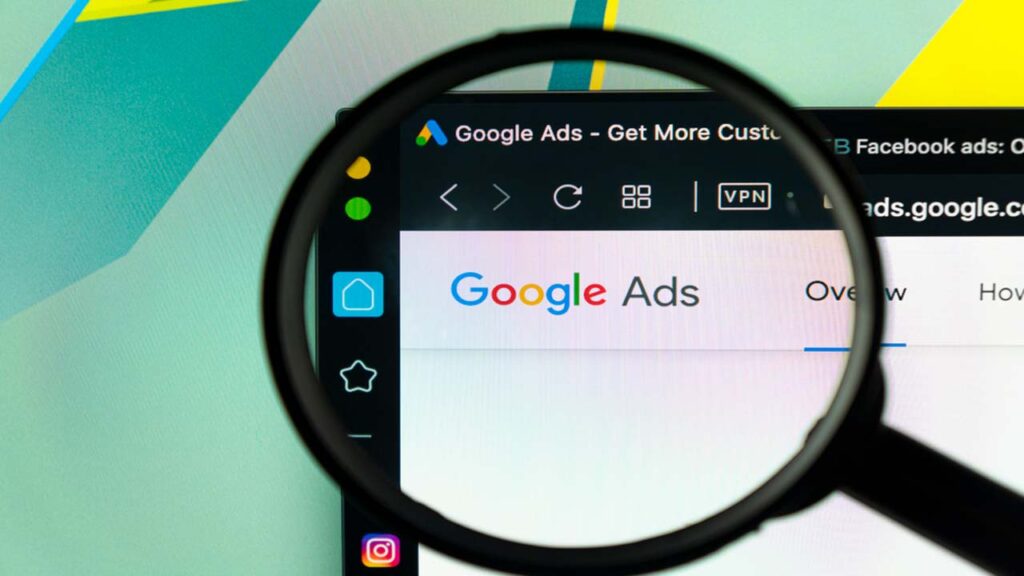Maximizing Impact with Online Adverts: Strategies and Insights
Brett Lewis
Paid Ads - May 6, 2024

Online adverts hold the key to reaching new heights in a digital-first market. Dive into this comprehensive guide exploring the types, nuances, and impact of online advertising. Without the frills, we deliver smart strategies and actionable insights to effectively position your ads, connect with your audience, and measure the success of your campaigns.
Key Takeaways
- Online advertising offers various formats and precise targeting, enabling cost-effective promotion and engagement with customizable market segments.
- Effective online ad campaigns require alignment with business strategy, clear messaging, clear KPIs for success measurement, and continuous optimization to adapt to user behavior and market trends.
- Advertisers must respect user privacy and adhere to regulations by providing transparent data collection practices and user control over personal data to ensure ethical online advertising.
Decoding Online Adverts: Types and Purposes

Before diving into the world of online advertising, it’s important to familiarize yourself with its terrain. It’s a broad spectrum that encompasses numerous forms, each designed to deliver promotional messages to the intended audiences in unique ways. The primary goal of these ads? To persuade you, the user, to take action, be it making a purchase, subscribing to a newsletter, or simply clicking on a link. You’ve likely encountered these ads in the form of social media advertising, display advertising, and mobile advertising, to name a few.
The appeal of online advertising lies in its creative freedom. It allows advertisers to present these promotional messages through a myriad of formats, including:
- Images
- Videos
- Audio
- Interactive links
And the best part? These online ads can reach a broad audience and offer precise targeting, making them a more cost-effective alternative to traditional media. Advertisers can target these ads based on various demographics, such as age, location, and interests, thereby connecting with individuals most likely to be interested in their products or services. This is a crucial feature of online advertising, allowing for reaching customizable and narrow market segments, using techniques like geo-targeting to present relevant ads based on user geography.
Banner Ads Unveiled
We’ll begin by examining a fundamental aspect of online advertising – banner ads, also known as display ad. These graphical ads, displayed within a web page, use visual elements to grab your attention. Since their inception in the early 1990s on platforms like Prodigy and HotWired, these banner ads have evolved to include various content types, ranging from static to interactive rich media. The Google Display Network, for instance, hosts text, image, and video-based ads across a vast collection of network sites, making it a major platform for banner ads.
The success of banner ads lies not just in their visual appeal but also in their strategic design. A well-designed banner ad comprises:
- Branded visual content
- Clickable elements that redirect users to the advertiser’s site
- Rich media and engaging interactive elements that drive user engagement
By targeting niche websites and audiences, banner ads enable advertisers to leverage high-quality traffic from other websites cost-effectively.
The Power of Video Ads
Transitioning from static banner ads, we enter the dynamic realm of video ads. Video advertising is essentially promotional content that plays before, during, or after streaming content, designed to capture and hold viewers’ attention. But what sets video ads apart? It’s their ability to:
- Tell stories
- Provide educational content
- Use humor
- Incorporate interactive elements
All of these enable higher engagement and emotional connection with the audience.
Video ads come in various formats, such as in-stream video ads, out-stream video ads, and bumper ads, each catering to different user experiences. They feature prominently on platforms such as YouTube and TikTok, demonstrating their effectiveness in engaging users across various social media avenues.
Search Engine Spotlight: Google Ads and Beyond
Next, we focus on search engine marketing, an important tool for enhancing website visibility on search engine results pages via paid ads. Google Ads, a dominant player with a market share of 85.53%, allows advertisements to appear alongside search results, managed through its platform designed for pay-per-click ads.
The effectiveness of search engine marketing revolves around keyword research, which influences the placement and cost of search ads due to the auction-based CPC model. Platforms like Google Ads and Microsoft Ads offer a cost-effective mechanism for advertisers to control spend, with flexibility in managing CPC or CPM advertising.
Alternative platforms like Bing provide a valuable opportunity for advertisers to benefit from less competition and potentially higher ROI for their search ads.
Crafting Successful Ad Campaigns

Now that we’ve explored the various types of online adverts, let’s delve into the art of crafting successful ad campaigns. A successful advertising campaign must:
- Align with the business’s positioning strategy
- Identify the correct target audience
- List meaningful features and benefits of the product or service
- Have a clear and simple message
- Often have a memorable and credible headline that resonates with every other ad element.
To ensure that your targeted ads reach the right people at the right time, it’s vital to use targeting options in online advertising. This helps to reach highly specific audiences and avoid the pitfalls of over-targeting or under-targeting. It’s also essential for ads to have compelling elements like a clear and engaging message, high-quality visuals, and a strong call to action (CTA) to prompt the desired response from viewers.
Thorough planning and proper execution are key to successfully advertise online through web advertising.
Conceptualizing Your Message
Establishing the core message of your advertising campaign is a critical initial step in crafting a victorious campaign. Content marketing involves the creation of relevant content that addresses the specific questions of your target audience. This process is essential for engaging with and attracting potential customers. This content can be used to boost your search engine rankings, attracting more organic traffic and thus improving SEO, which in turn can enhance engagement and ROI.
Creating a likable and consistent ad style and personality can make your advertisements more memorable and prevent confusion among potential buyers. By leveraging digital advertising, you can enhance your organic marketing efforts and achieve a positive return on investment.
Targeting Your Audience
Identifying your audience is a vital element of any successful ad campaign. It involves audience research, which provides insights into demographics, interests, and search terms, which can be used to tailor your ad campaigns. By understanding your target audience’s demographics and intent, you can choose the appropriate ad platform, aligning with the audience’s behavior and psychographics for increased engagement.
Data from Facebook’s ad tracking pixel, for instance, can be used to create custom audiences, enabling more precise targeting in future ad campaigns. However, mobile advertising must be approached with caution due to increasing regulations that can impact how ads are served on mobile-specific channels such as apps and messages.
Allocating Your Budget
Just as it is crucial to define the core message and target audience, establishing a clear budget for an ad campaign is also paramount. It involves multiple stakeholders and is a portion of the overall marketing budget. A clearly set budget defines what an advertiser is willing to pay and acts as a financial blueprint for the campaign.
The budget determines how long your ads will run and impacts the number of leads generated from the campaign. Understanding the bidding system used by ad networks, such as cost per click (CPC) for Google and Facebook or cost based on watch time and audience targeting for YouTube, helps advertisers manage ad spend effectively.
Navigating the Digital Advertising Landscape

Venturing deeper into the digital advertising landscape, we come across a plethora of opportunities and challenges. The importance and supremacy of digital advertising strategies are significantly highlighted in the landscape of 2024. One of the dominant trends is programmatic marketing automation, projected to account for 69% of digital marketing expenditure.
The emerging metaverse represents an innovative domain where brands can explore and implement virtual and immersive advertising strategies. Balancing original and curated content is vital in offering value and fostering community as part of a digital advertising content strategy.
Social Media Advertising Dynamics
Social media advertising is a key part of the digital advertising ecosystem. It plays a vital role in:
- generating brand awareness
- building a community
- reaching a large audience
- acquiring new customers
Placing paid ads on social media is advantageous for marketers as many users spend considerable time on social media platforms, leading to significant brand engagement.
An excellent example of the effectiveness of social media advertising is Facebook. In the June 2014 quarter, around 62% of Facebook’s ad revenue came from mobile advertising, a 41% increase from the previous year. Facebook offers various ad types, including:
- Photo ads
- Video ads
- Story ads
- Lead ads
These options accommodate diverse marketing strategies.
The Shift to Mobile: Adapting Strategies
Continuing our journey through the digital advertising landscape, the significant shift to mobile is impossible to ignore. Mobile advertising has grown significantly due to the rising number of mobile devices, better connectivity, enhanced screen resolutions, and higher usage by consumers. Mobile ads are specifically designed to appear on smartphones, tablets, and other portable devices, illustrating a curated approach for users on-the-go.
However, online adverts face challenges in delivering a consistent user experience because of variations in operating systems, web browsers, and screen sizes on mobile devices. Therefore, to stand out in the crowded online marketing ecosystem in 2024, personalization of mobile ads is crucial.
Native Advertising and Sponsored Content
Native advertising is another noteworthy aspect within the digital advertising landscape. Native advertising is sponsored content created by publishers to resemble regular pieces of content on their website, engaging users without disrupting their experience. These ads are designed to look like an ‘add-on’ within content, facilitating a more integrated form of promotion.
To implement native ads in a way that builds trust, businesses can:
- Create a blog related to their niche with helpful information and promote products natively within the discussion
- Use in-feed ads, which appear within the regular content feed of social media, and are designed to match the look and feel of the platform
- Subtly mark the ads as ‘Sponsored’ or ‘Promoted’ to ensure transparency
Advanced Advertising Techniques

Venturing further into the digital advertising world, we come across advanced techniques like:
- Retargeting: ads that help reengage visitors by reminding them of products they previously showed interest in, leading to higher click-through rates and conversions compared to regular banner ads.
- Influencer marketing: leveraging the trust and recommendations of individuals with a substantial social media following, driving interest and engagement in products or services.
- Programmatic buying: an automated process of buying and selling digital advertising inventory, allowing for real-time bidding and optimization.
These advanced techniques can greatly enhance your digital advertising strategy.
Programmatic marketing automates the purchase of online advertising using algorithms to target specific customers with relevant content in real-time auctions. These advanced techniques provide a more personalized and targeted approach to online advertising, ensuring that ads reach the right people at the right time.
Retargeting and Contextual Ads
Retargeting is a technique used to reengage visitors who have previously interacted with your website or online ad. It works by tracking these users and serving them relevant ads as they browse other websites, effectively reminding them of your products or services. This technique uses cookies to track user web activity and serve relevant ads, providing a personalized ad experience.
On the other hand, contextual advertising uses machine learning and natural language processing to analyze webpage content and local information, serving relevant ads in real time. Unlike retargeting, which relies on past user behavior, contextual ads align with user interests based on current content consumption, providing a more private advertising experience.
Influencer Marketing and Brand Partnerships
Influencer marketing is another advanced advertising technique that has gained popularity in recent years. Influencers, who are regarded as authorities in their niche, can significantly influence their followers’ purchasing decisions while boosting brand awareness. This technique leverages the trust and recommendations of individuals with a substantial social media following, driving interest and engagement in products or services. Some benefits of influencer marketing include:
- Increased brand visibility and reach
- Authentic and relatable content
- Targeted audience engagement
- Improved brand reputation and credibility
By partnering with influencers, businesses can tap into their existing audience and build a strong brand presence in the market.
The success of influencer campaigns highly depends on finding influencers who are not only aligned with the brand’s values but also resonate with the intended target audience. Social media platforms, like TikTok and YouTube, are creating funds to incentivize creators to produce content that is aligned with brand values, facilitating beneficial influencer partnerships.
Programmatic Buying and Ad Networks
Programmatic buying is a technique that automates the purchase of online advertising. It uses algorithms to:
- Target specific customers with relevant content
- Participate in real-time auctions
- Allow for quick deployment of ads, without being tied to the publisher’s schedule
- Modify or replace ads more rapidly than in traditional media.
This technique offers advertisers more flexibility and efficiency in their ad space usage for advertising campaigns.
Ad networks have enhanced their data and machine learning capabilities to offer more effective targeting strategies and show more relevant ads to users. This development has made programmatic buying a popular choice for advertisers looking to maximize the effectiveness and reach of their online advertising campaigns.
Measuring Success: Analytics and Optimization

Assessing success is vital in any advertising campaign. It involves setting clear campaign goals, tracking key performance indicators (KPIs), and optimizing ad campaigns for maximum effectiveness. Determining one or two KPIs is fundamental to focusing tracking efforts and monitoring the success of online adverts.
Advertisers have access to detailed data for measuring user interactions with campaigns, which is essential for:
- Revising and optimizing online adverts
- Testing different versions of ads and analyzing the results for refining campaigns
- Enhancing paid advertising strategies through continuous tracking and optimization
This process enables continuous enhancement of paid advertising strategies.
Interpreting Data from Ad Campaigns
Analyzing data from ad campaigns is a fundamental component of success measurement. Conversion tracking in Google Ads, for instance, pinpoints how ad engagements translate into valuable customer actions such as making purchases or signing up for newsletters. The return on investment (ROI) is another metric that shows the net profit to cost ratio, reflecting the profitability of Google Ads.
Some tools and strategies to improve your Quality Score in Google Ads and enhance your ad placements are:
- Refining your keyword selection using the search terms report in Google Ads to reveal actual search queries triggering ad impressions
- Utilizing tracking pixels to monitor user interactions with ads and optimize the path from first contact to conversion
- Using Google Analytics to gain insights into your target audience, including demographic data, user interests, and geographic information
Implementing these tools and strategies can help improve your ad relevance, reduce costs, and enhance your ad placements.
A/B Testing for Improved Engagement
A/B testing, also known as split testing, is another vital technique for gauging ad campaign success. It compares different versions of online adverts to determine which one performs better. Advertisers can employ A/B testing to compare how different ad formats, like banner ads or video ads, are received by a specific demographic or user segment.
Through A/B testing, it is possible to establish which ad formats lead to higher engagement rates by tracking metrics such as click-through rate and conversion rate. Testing helps in fine-tuning ad content, from headlines to images, ensuring that the message resonates with the target audience and leads to better engagement.
Post A/B testing, advertisers often iterate on the winning advert, further optimizing elements to continually enhance user response and engagement rates.
Continuous Improvement Cycle
In the fast-evolving digital era, constant improvement is essential to maintain a competitive edge. The continuous improvement cycle for online advertising now involves anticipating customer desires to deliver personalized experiences. Automation plays a key role in enabling ongoing optimization by personalizing customer experiences based on their behaviors and preferences.
Adopting a proactive approach to marketing, which leverages automation to anticipate and meet customer needs, ensures that advertising campaigns remain effective and pertinent in a dynamic digital landscape. This approach is all about learning, adapting, and evolving to keep pace with changing customer behaviors and market trends.
Integrating Online and Offline Advertising
While exploring the complex world of online advertising, remember that it doesn’t operate in a vacuum. There’s a symbiotic relationship between online and offline advertising, which, when leveraged effectively, can create a unified customer experience. This integration involves maintaining consistency in branding and messaging to avoid confusion and reinforce brand identity.
A combined use of online and offline advertising contributes to a more comprehensive marketing approach that can significantly increase brand awareness and engagement. Viewing online and offline channels as complementary tools enables a cohesive advertising strategy that enhances the brand, leading to increased leads and revenue.
Synergy Between Digital and Traditional Advertising
In the realm of integrating online and offline advertising, synergy is the key factor. Digital and traditional advertising channels can work in harmony by leveraging the targeted messaging and tracking capabilities of the former, with the broad audience reach of the latter. Businesses can utilize a consistent brand story across traditional and digital advertising mediums to facilitate easy brand recognition and recall.
Digital and traditional advertising can be synergized by using popular online content, such as high-engagement social media images, in offline print campaigns to create a unified brand experience. Businesses can leverage the precision and analytical capabilities of digital advertising in concert with the expansive reach of traditional advertising mediums to craft a more effective overall marketing strategy.
Blending Tactics for Maximum Reach
Mixing online and offline advertising strategies can extend reach and foster a cohesive brand experience. For instance, embedding QR codes on print advertisements links offline marketing with online platforms, allowing immediate engagement with the digital content. Offline marketing materials can feature online calls-to-action, directing the audience to specific web pages to facilitate ongoing digital interactions.
By using trackable URLs and phone numbers in offline advertising materials, advertisers can measure the effectiveness of these campaigns in the online domain. Cross-channel promotion employs both online and offline advertising mediums to get the attention of the audience across various touchpoints. Urban advertising leverages the high-visibility environments of densely packed cities to enhance campaign reach and can be integrated with online advertising strategies for maximum effect.
Best Practices for Ethical Online Advertising
While venturing through the world of online advertising, it’s vital to bear in mind the importance of ethical practices. Respecting user privacy, combating ad fraud and spam, and adhering to regulations are all critical components of ethical online advertising. By complying with regulations, advertisers can avoid penalties, lawsuits, and ensure they are respecting user privacy through measures like obtaining consent, providing opt-out mechanisms, and responsible data collection.
Over-targeting can lead to an intrusive user experience, promoting the need for ethical approaches that respect the audience’s perception of privacy. A significant portion of internet users, 27% in the US and 58% among technical audiences, have resorted to ad blocking software due to invasive or unethical ad practices. This highlights the need for advertisers to adopt ethical advertising practices that respect user privacy and provide a positive user experience.
Respecting User Privacy
In the realm of digital advertising, upholding user privacy is of utmost importance. Advertisers must comply with global privacy regulations such as the GDPR in the EU, which requires clear consent from users before collecting personal data. Failure to adhere to privacy regulations can result in significant fines and damage to brand reputation.
Transparency in data collection should be a core aspect of online advertising, with clear disclosures to users regarding what data is collected and how it will be used. Implementing opt-in and opt-out options for users allows them to have control over their data and the ads they are served, promoting trust and user agency.
Privacy-centric approaches like contextual targeting, which do not rely on personal data, can still effectively reach target audiences while respecting user privacy.
Combatting Ad Fraud and Spam
In the online advertising sphere, ad fraud and spam pose substantial challenges. Ad fraud encompasses various forms of deceptive advertising practices, including the use of software to simulate false clicks or impressions. Adware, often installed without the user’s permission, is considered a type of malware and contributes to ad fraud by displaying unwanted advertisements.
Trick banner ads are designed to imitate screen elements users commonly interact with to deceive them into clicking on ads, artificially inflating click-through rates. By combating ad fraud and spam, advertisers can enhance the transparency and quality of ad content, providing a better user experience and improving the overall effectiveness of online advertising campaigns.
Summary
As we round up our exploration of the world of online advertising, it’s clear that the landscape is vast and diverse. From understanding the different types of online ads to crafting successful ad campaigns, navigating the digital advertising landscape, exploring advanced advertising techniques, and measuring success, we’ve covered a wide range of strategies and insights for maximizing impact with online adverts.
In this rapidly evolving digital era, it’s essential for businesses to continuously adapt their advertising strategies. By integrating online and offline advertising, respecting user privacy, and combating ad fraud and spam, businesses can ensure their advertising practices remain ethical and effective. With these insights, we hope you’re now equipped to navigate the world of online advertising with confidence and create impactful advertising campaigns that resonate with your target audience.
Frequently Asked Questions
What is advertising on a website?
Advertising on a website is a digital marketing strategy that uses the internet to promote products and services to the right audience, helping to drive website traffic and persuade targeted customers to take specific actions, such as making a purchase.
What is the most popular online advertising?
The most popular online advertising platforms are Google Ads and Facebook, with a high percentage of marketers using both platforms for their digital advertising needs. Google Ads, in particular, captures the largest share of digital ad spending compared to its competitors (approximately 28.6% in 2021).
Which is an example of online advertising?
An example of online advertising is display advertising, pop-up advertisements, email advertisements, SEM advertising, pay-per-click advertising, rich media advertising, social media advertising, and native advertising. Choose the form that best suits your business goals and target audience.
What are online ads called?
Online ads are also known as online advertising, Internet advertising, digital advertising, or web advertising. They are a form of marketing that uses the Internet to promote products and services to audiences and platform users.
What are the different types of online ads?
Online ads come in various types such as banner ads, video ads, search ads, social media ads, and mobile ads, each serving a specific purpose to reach different audiences.
